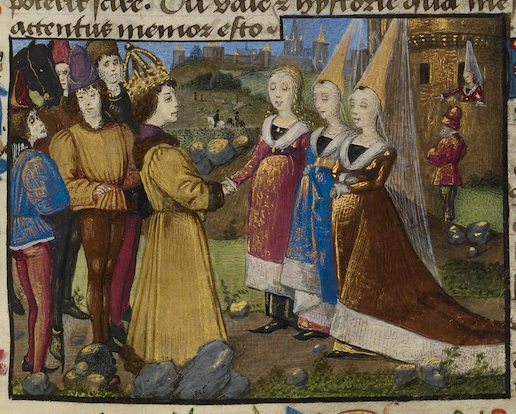If you think you have already seen the strangest outfits in the world, check out these medieval clothes and accessories, some of which were considered “inventions of the devil” by the Church.

The purpose of clothing in the Middle Ages was not so much to protect people from cold or make work more comfortable as to show one’s social status. Although medieval society was mostly made up of poor people, luxury was highly valued.
Medieval men and women proudly boasted items of clothing that would make any kind of work impossible, let alone manual work. Examples are Venetian women’s sandals, which were so high their owners needed support while walking, high and elaborate hairstyles, dresses with trains, and long, pointy shoes.
Calze solate were stockings with leather soles which men wore instead of shoes by attaching them to the doublet. In Venice, these accessories were produced by a particular guild, known as solarii.
Shoes were often made of lambskin, and the most popular in the 14th and 15th centuries were “à la poulaine” (shoes in the Polish fashion), whose length indicated their owner’s social class. The longer they were, the more important the person was in society. Kings’ shoes had no limits: they could measure up to 46 cm and the end was often filled with moss to make them keep their shape.
Because they made kneeling in church difficult and were used to lift the hem of women’s dresses, pointy shoes attracted the hatred of the Church, which considered them to be an invention of the devil. The gamurra, a women’s dress popular in the 15th century with openings under the armpits, elbows, and even along the hips, was also considered demonic by members of the Church.
In the 15th century, new hairstyles became fashionable: the most famous today thanks to fairy tale illustrations is the Venetian hennin, consisting of a high, firm cone covered in silk or velvet with a veil that was allowed to fall to the ground.

For more medieval fashion inspiration, check out The Isabella Breviary, the Rose Novel for King François I, the Gaston Phoebus – Master of Game, the Lambeth Palace Apocalypse, and the Leggendario Sforza-Savoia.




